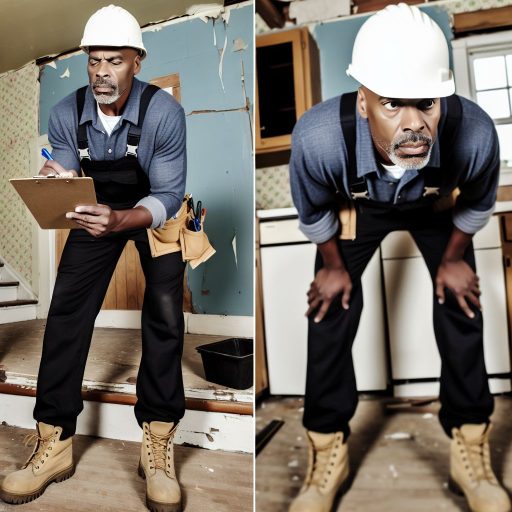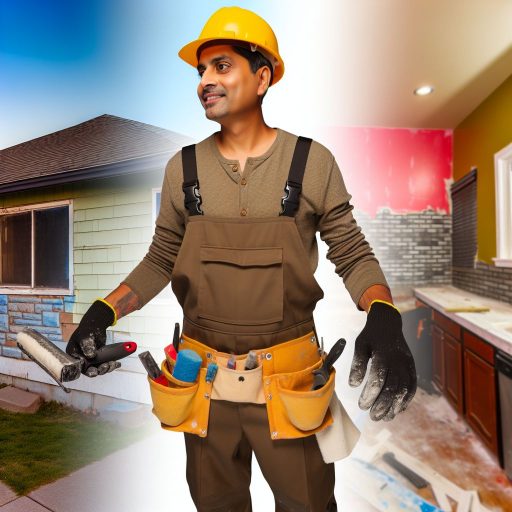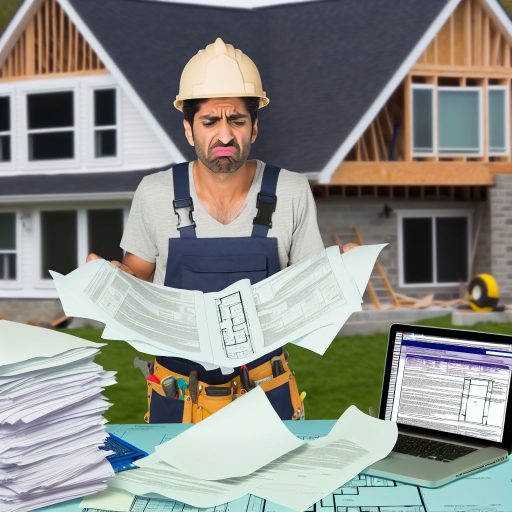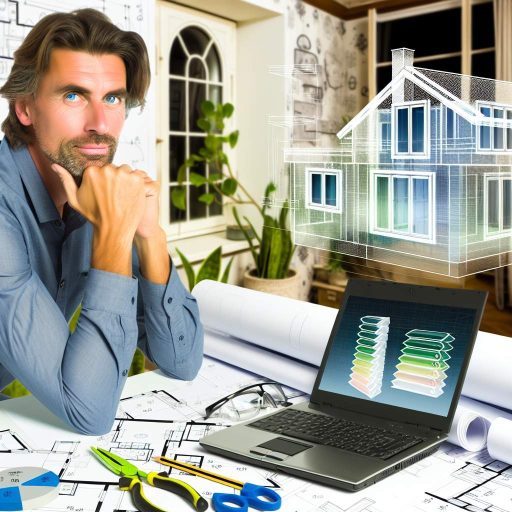Understanding Smart Technology
Definition of Smart Technology
Smart technology refers to devices that connect to the internet.
They allow users to control functionalities remotely.
Additionally, they enhance convenience and efficiency in daily tasks.
Benefits of Smart Technology
Incorporating smart technology during renovations increases home value.
It also improves energy efficiency and reduces utility costs.
Moreover, it provides enhanced security for homeowners.
Smart devices offer convenience and improve quality of life.
Enhanced Home Renovations
Integrating smart technology transforms ordinary spaces into modern ones.
For example, smart lighting can adjust brightness based on natural light.
This feature ultimately contributes to a comfortable living environment.
Additionally, smart thermostats optimize heating and cooling systems.
They learn your preferences and adjust accordingly for efficiency.
Types of Smart Devices
Smart home systems include various devices that enhance functionality.
- Smart security cameras offer real-time surveillance.
- Smart locks provide keyless entry for added security.
- Smart appliances, like refrigerators, help manage food inventory.
- Smart speakers act as hubs for controlling other devices.
Choosing appropriate devices depends on individual needs and preferences.
Considerations for Implementation
Before incorporating smart technology, assess your renovation goals.
Transform Your Real Estate Decisions
Unlock personalized real estate insights crafted just for you. Get actionable advice designed to amplify your success.
Get StartedDetermine which areas of your home would benefit the most.
Also, consider compatibility between devices to ensure seamless integration.
Consult with professionals who specialize in smart home installations.
They can provide valuable insights and guidance throughout the process.
Assessing Your Home’s Needs
Understanding Your Space
Begin by thoroughly evaluating your home’s current layout.
Identify spaces that require renovation or improvement.
Consider how these areas can benefit from smart technology.
Additionally, prioritize spaces that experience high usage.
Mapping Out Renovation Goals
Set clear objectives for your renovation project.
Determine which smart features align with your lifestyle.
For example, smart lighting may enhance convenience in living areas.
Moreover, consider energy-efficient appliances for the kitchen.
Involving Family and Stakeholders
Engage family members in discussions about technology needs.
Gather insights on their preferences for smart features.
Showcase Your Real Estate Business
Publish your company profile on our blog for just $200. Gain instant exposure and connect with a dedicated audience of real estate professionals and enthusiasts.
Publish Your ProfileAdditionally, consult with professionals in home automation.
Here, experts can help identify feasible technology options.
Analyzing Technological Compatibility
Research various smart home technologies available today.
Identify which systems integrate well with your existing setup.
For example, Wi-Fi-enabled devices require stable connectivity.
Therefore, invest in a robust internet infrastructure first.
Budget Considerations
Develop a detailed budget for your renovation project.
Include costs for smart technology installation and devices.
Furthermore, factor in ongoing expenses for maintenance.
Strive to balance costs with the benefits of smart technology.
Choosing the Right Smart Devices
Understanding Your Needs
Begin by assessing your home’s specific needs.
Consider areas where smart technology can enhance convenience.
Make a list of essential features you desire in devices.
Researching Compatible Products
Investigate which brands offer reliable smart home products.
Ensure devices are compatible with existing home systems.
Read reviews and check specifications for compatibility.
Utilizing Smart Home Ecosystems
Explore smart home ecosystems like Google Home and Amazon Alexa.
These platforms offer a range of compatible devices.
Select products that seamlessly integrate with your chosen ecosystem.
Consideration of Installation Requirements
Understand the installation requirements for each device.
Some devices may require professional installation.
Plan your renovations accordingly to accommodate these needs.
Prioritizing Energy Efficiency
Choose smart devices that promote energy efficiency.
Energy-efficient devices can reduce utility bills over time.
Check for energy star ratings and efficiency certifications.
Budgeting for Smart Technology
Establish a budget for your smart technology purchases.
Factor in both the cost of devices and installation services.
Research deals and financing options for expensive equipment.
Staying Updated on Trends
Keep up with the latest trends in smart technology.
New devices and features are continually being developed.
Showcase Your Real Estate Business
Publish your company profile on our blog for just $200. Gain instant exposure and connect with a dedicated audience of real estate professionals and enthusiasts.
Publish Your ProfileFollow tech forums and industry news to remain informed.
You Might Also Like: Optimizing Budget Planning Through Renovation Cost Estimation For U.S. Investors
Planning for Installation: Timing and Coordination with Renovation Schedules
Understanding Renovation Timelines
Start by outlining the full timeline for your renovations.
This timeline helps identify key phases for your smart technology installation.
Renovation schedules often have fixed deadlines.
Thus, integrating smart technology requires careful planning.
Establishing these timelines early ensures seamless installation.
Coordinating with Professionals
Engage with your contractor about smart technology integration.
Communication is essential for successful coordination.
Determine which installations can occur simultaneously.
This overlap can save time and reduce costs.
For instance, wiring for smart systems often aligns with electrical work.
Assessing Technology Lead Times
Different smart technology options have varying installation lead times.
Research the procurement timelines for devices you want to install.
Order key components well in advance.
This approach prevents delays later in the renovation process.
Implementing a Phased Approach
Consider a phased approach for complex renovations.
Install basic smart features first, such as lighting or security.
Then, layer in more advanced systems over time.
This strategy spreads out costs and minimizes disruption.
Reviewing and Adjusting Plans
Regularly review the renovation schedule with your team.
Adjust plans as necessary based on progress and challenges.
Stay flexible to accommodate unexpected delays or changes.
Ultimately, adaptability is key to a smooth renovation experience.
Gain More Insights: Guide To Navigating Legal Challenges In Property Development
Budgeting for Smart Technology: Costs vs. Long-term Savings
Understanding Initial Costs
Smart technology often comes with a higher upfront cost.
This can deter homeowners from making the investment.
However, it’s crucial to assess long-term benefits alongside initial expenses.
Evaluating Long-term Savings
Investing in smart technology can lead to significant savings over time.
For instance, smart thermostats can reduce energy bills by optimizing usage.
Showcase Your Real Estate Business
Publish your company profile on our blog for just $200. Gain instant exposure and connect with a dedicated audience of real estate professionals and enthusiasts.
Publish Your ProfileMoreover, smart lighting can adjust to occupancy, further cutting costs.
Homeowners should consider these long-term financial benefits.
Cost-Benefit Analysis
Performing a cost-benefit analysis helps clarify financial decisions.
Calculate the initial investment versus potential savings.
This analysis should include factors like resale value.
Smart technology can enhance a home’s appeal to future buyers.
Financing Options for Smart Technology
Many financing options exist for integrating smart technology.
Consider home improvement loans to manage upfront costs effectively.
Additionally, some utility companies offer rebates for energy-efficient devices.
Research local incentives to maximize savings on installations.
Trends in Smart Home Technology
Technology advancements provide more cost-effective options.
For example, DIY installation kits are becoming popular.
These kits lower installation costs significantly.
Stay updated on trends to make informed budgeting decisions.
Learn More: DIY Renovation Tips For Maximizing Real Estate ROI
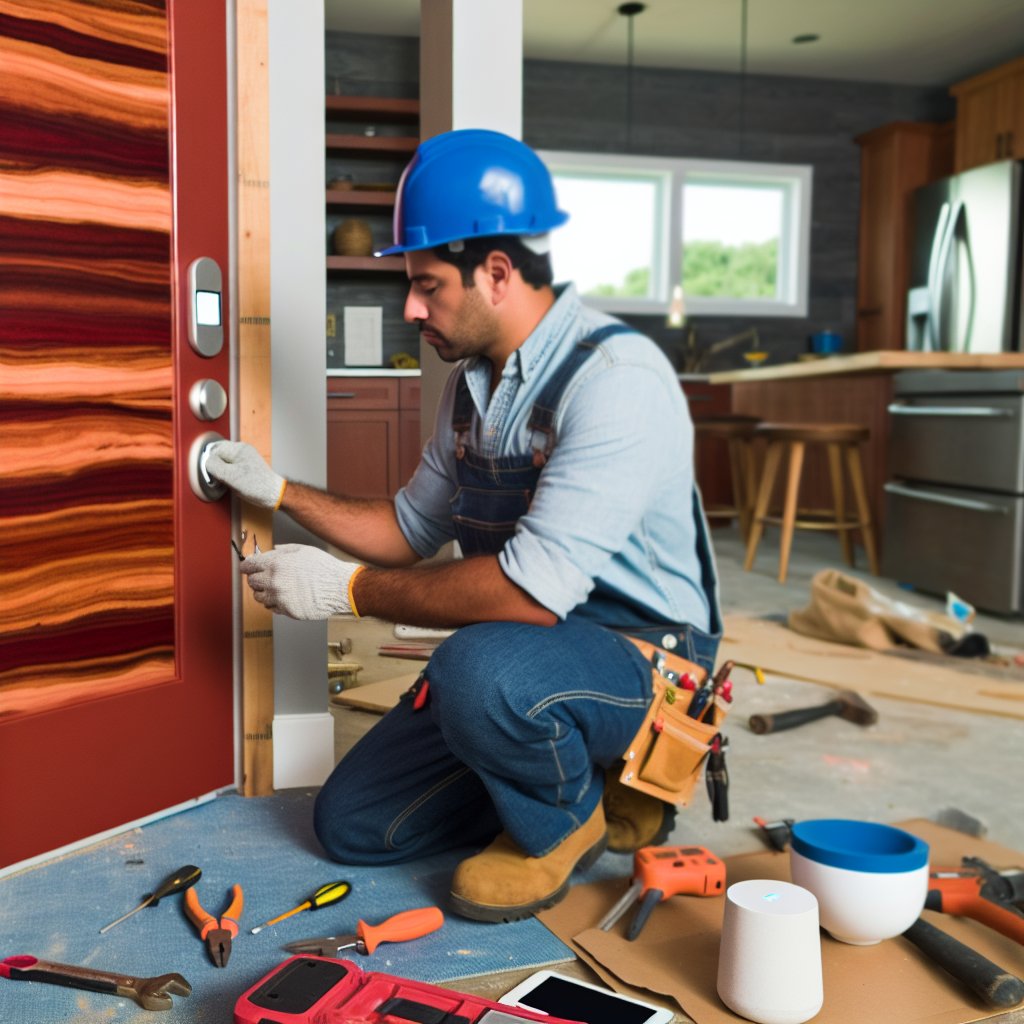
Integrating Smart Technology into Key Areas
Kitchens
The kitchen serves as the heart of the home.
Integrating smart technology enhances its functionality.
Start with smart appliances that simplify cooking.
Smart ovens and refrigerators can recommend recipes.
Next, consider voice-activated assistants for hands-free operation.
They can set timers, play music, or access information.
Don’t overlook smart lighting solutions for ambiance.
You can control brightness and color with your smartphone.
Moreover, smart thermostats help maintain ideal temperatures.
Such features create a comfortable cooking environment.
Bathrooms
Smart technology in bathrooms promotes comfort and convenience.
Start with smart showers that allow personalized settings.
Control water temperature and flow with ease.
Add smart mirrors with built-in lighting and defoggers.
These mirrors enhance your morning routine.
Showcase Your Real Estate Business
Publish your company profile on our blog for just $200. Gain instant exposure and connect with a dedicated audience of real estate professionals and enthusiasts.
Publish Your ProfileSmart toilets offer advanced features for hygiene and comfort.
They include functions like heated seats and automatic lid opening.
Additionally, consider smart speakers for entertainment.
You can listen to music or news while getting ready.
Living Spaces
Your living space can transform with smart technology.
Begin with smart thermostats to optimize energy usage.
They learn your schedule and adjust heating or cooling automatically.
Smart lighting enhances ambiance and saves energy.
Control the lights from your smartphone or voice assistant.
Incorporate smart entertainment systems for seamless integration.
You can stream content from multiple devices effortlessly.
Consider home security systems with smart surveillance cameras.
They allow you to monitor your home remotely.
Lastly, utilize smart home hubs for centralized control.
This can streamline your entire home automation experience.
Uncover the Details: Property Development Strategies For First-Time Real Estate Investors
Ensuring Security and Privacy: Best Practices for Smart Home Systems
Understand Your Devices
Begin by thoroughly researching the smart devices you plan to install.
Check for user reviews and expert recommendations.
Select devices from reputable manufacturers with a track record of security.
Secure Your Network
Your home Wi-Fi network is the backbone of your smart home.
Change the default password to a strong, unique one.
Consider using a separate network for your smart devices.
This creates an additional layer of security.
Regularly Update Firmware
Smart devices receive firmware updates for security enhancements.
Make it a habit to check for and apply these updates regularly.
This practice helps protect your devices from vulnerabilities.
Enable Two-Factor Authentication
Where available, enable two-factor authentication for your devices.
This adds an extra layer of protection against unauthorized access.
It requires a second form of identification besides your password.
Monitor Your Devices
Keep an eye on the activity from your smart devices.
Showcase Your Real Estate Business
Publish your company profile on our blog for just $200. Gain instant exposure and connect with a dedicated audience of real estate professionals and enthusiasts.
Publish Your ProfileMany devices offer activity logs for monitoring purposes.
Look out for any unusual behavior or unauthorized access attempts.
Educate Family Members
Ensure everyone in your household understands the importance of security.
Discuss how to recognize potential security threats.
Share best practices for using smart devices safely.
Utilize Strong Passwords
Create strong, complex passwords for each device and account.
Avoid using easily guessable information, like birthdays.
Consider using a password manager to keep track of your passwords.
Regularly Review Privacy Settings
Many devices have privacy settings you can customize.
Review these settings to control what data is shared.
Adjust settings according to your comfort level regarding privacy.
Disable Unused Features
Only enable features that you actively use on your smart devices.
This reduces the number of potential vulnerabilities.
Turn off features like remote access if you do not need them.
Invest in Security Software
Consider using security software designed for smart home environments.
This can help protect your devices from malware and attacks.
Look for solutions that focus on IoT device security.
Future-proofing Your Renovation: Trends in Smart Technology to Consider
Smart Home Hubs
Smart home hubs serve as the central command for all your devices.
They allow easy control of lights, thermostats, and security systems.
For instance, the Google Nest Hub simplifies voice commands and planning.
Moreover, it integrates seamlessly with various smart products.
Energy-Efficient Appliances
Energy-efficient appliances minimize consumption and reduce utility bills.
Consider investing in smart refrigerators, washers, and dryers to save energy.
Brands like Samsung and LG offer models that monitor usage patterns.
This functionality helps households become more eco-friendly.
Automated Lighting Systems
Automated lighting systems enhance convenience and security.
Smart lights can adjust according to your daily schedule or activity.
For example, Philips Hue allows for customizable color and brightness settings.
Additionally, you can control lights remotely via your smartphone.
Home Security Solutions
Smart security cameras and alarms keep homes safe.
Showcase Your Real Estate Business
Publish your company profile on our blog for just $200. Gain instant exposure and connect with a dedicated audience of real estate professionals and enthusiasts.
Publish Your ProfileThey provide real-time alerts and video streaming directly to your phone.
Systems from Ring and Arlo offer integrated monitoring for peace of mind.
Furthermore, you can integrate doorbell cameras for added security.
Smart Thermostats
Smart thermostats optimize heating and cooling for energy savings.
These devices learn your habits and adjust settings accordingly.
For example, the Nest Learning Thermostat can reduce energy waste.
Ultimately, this leads to lower energy expenses over time.
Voice-Activated Assistants
Voice-activated assistants bring a new layer of connectivity to your home.
Devices like Amazon Echo and Google Home enable hands-free interaction.
You can control various smart devices with simple voice commands.
This technology enhances overall convenience in daily tasks.
Smart Blinds and Shades
Smart blinds can automatically open or close based on sunlight.
This feature helps maintain optimal indoor temperature and light levels.
Furthermore, you can program them to close for privacy at night.
Brands like Lutron offer advanced models for smart home integration.
Health and Wellness Technology
Smart home technology now includes health monitoring devices.
Wearable devices can sync with home systems for comprehensive health tracking.
Smart air purifiers improve indoor air quality, supporting well-being.
Investing in tech like this enhances the comfort of your home.
Consider Future Trends
Staying informed on upcoming smart technology trends is vital.
New innovations will redefine how we experience our living spaces.
This proactive approach ensures your renovation remains relevant.
Ultimately, smart technology enhances both convenience and efficiency in your home.
Additional Resources
Partnerships for Climate-Smart Commodities Project Summaries …

